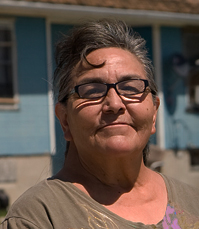|
|

 |
The southern Cheyenne led by Black Kettle lived for years in relative peace with white settlers near what is now Denver. However, as more settlers and gold seekers moved in, resentment among the Cheyenne rose as the hunting lands became more limited.
In the spring of 1864 J.M. Chivington accused Cheyenne warriors of stealing cattle. Chivington and other members of the Colorado volunteer militia used the accusation to attack the Cheyenne camps killing men, women and children indiscriminately. In an effort to resolve the problem the Colorado governor convinced the Cheyenne to settle at Sand Creek. On November 28th of 1864 Chivington, with approximately 1000 men, attacked the village once again without orders. At the time of the attack a United States flag and a white flag floated over the lodge of Black Kettle.
Chivington shouted, “Kill and scalp all the big and little; nits make for lice.” The brutality of the attack became a rallying point for the Native Americans for the wars that would continue for the next decade.
Big Kettle’s wife was shot nine times, but managed to survive. A majority of those killed were women and children and practically all were scalped. The Cheyenne suffered at least 300 casualties. Hours after the attack, when no hostile Indians were left in the camp the militia used children as targets. Soldiers prowled the devastated camp and mutilated bodies. Limbs and heads were taken to Denver where people paid money to look at the bloody body parts.
Four years after the massacre, a federal commission concluded that Chivington and his men acted with a degree of barbarism that even the most brutal of Indians could not match. Adding insult to injury, Chivington was never brought to trial, and while many criticized his actions, many others praised him to the end.
Black Kettle survived the massacre only to be killed four years later in the Washita Valley by the troops of the Seventh Calvary, led by George Armstrong Custer. |
|
|















